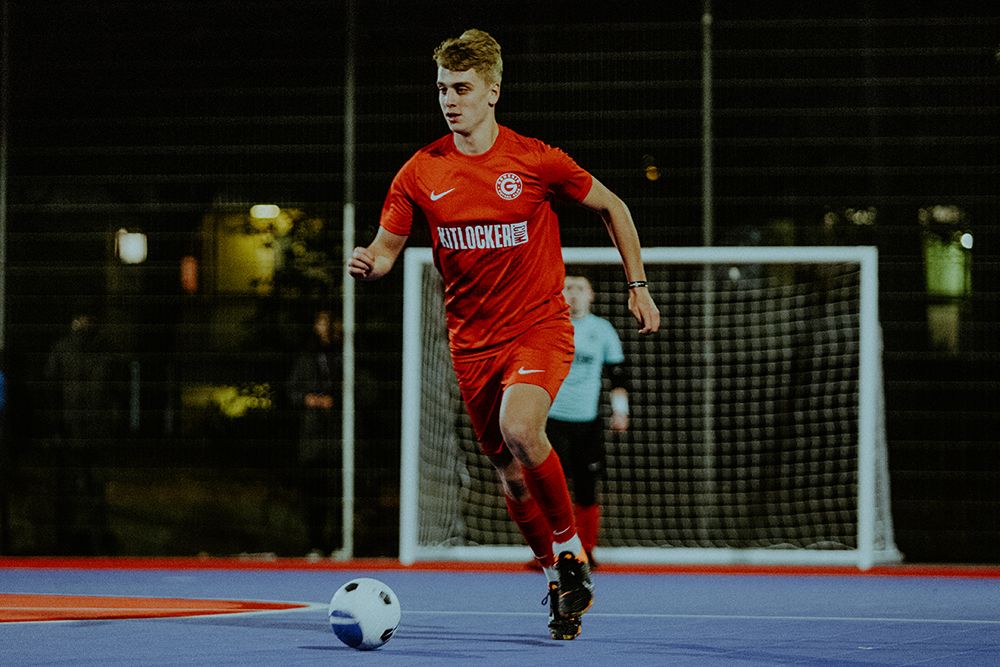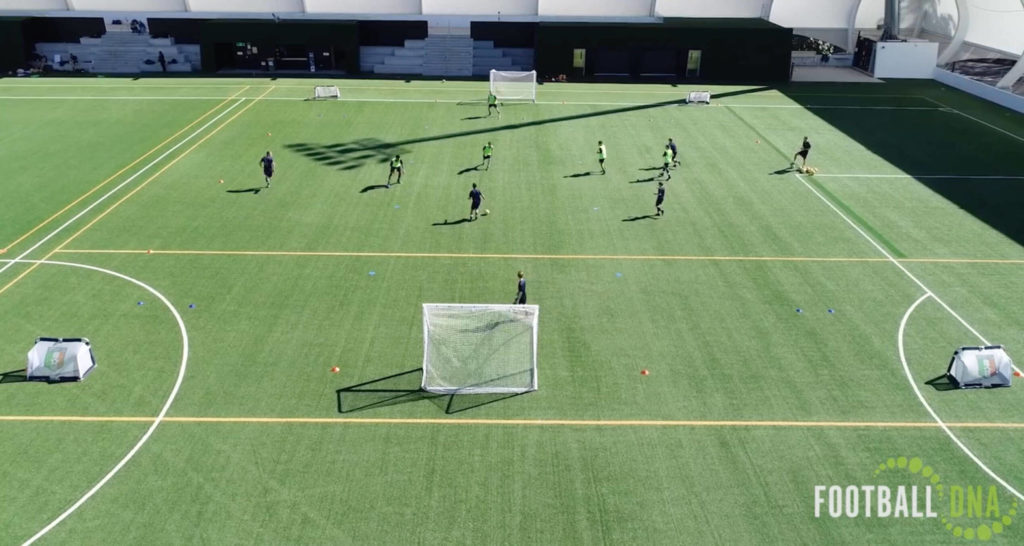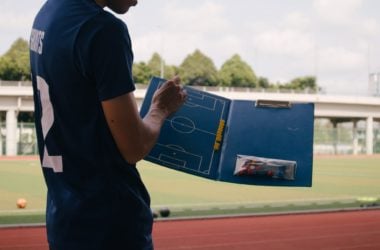Grassroots football is back! It’s been a long time coming and it’s a little bit different to before but we couldn’t be happier about it!
To assist coaches returning to action we’ve teamed up with our friends at Football DNA on a series of guest articles that offer advice and expertise in a number of areas.
Last week we looked at how to effectively plan training sessions. For the next instalment Ross Brooks from Football DNA tells us about the development benefits of small sided games.
The Statistics
- Players touch the ball five times more often in 4-a-side football and 50% more in 7-a-side than in full games.
- Players are involved in three times more one-against-one situations in 4-a-side football and twice as many in 7-a-side.
- On average, goals are scored every two minutes in 4-a-side football and every four minutes in 7-a-side.
- Goalkeepers are involved in the action two to four times more often in 7-a-side football than in 11-a-side football.
- The ball is out of play 8% of the time in 4-a-side football, 14% in 7-a-side and 34% in 11-a-side.
(stats from FIFA.com)

What Are the Benefits of Small Sided Football?
The statistical data makes it clear that small sided games will not only provide players with more game time, but also increase the volume of actions per game. With so much evidence to back up this approach, how can you use Small Sided Games to maximise your coaching programme? And if you do, what are the benefits?
- Time to observe – what do the players need? Through observing small sided game as a coach, you will be able to clearly highlight what players are best at and what they need to work on. This evaluation tool will not only enable you to put together a programme for your group as a whole but also for the individuals within your group.
- Games allow you to challenge the group, small groups and individual players. The better you understand the individual and what support they need, the easier it is to create challenges for them. An example of this may be limiting the touches they have.
- More time learning the skill, less time learning the game (simple practises, maximum benefits). As youth developers, it’s important to be brave by being willing to put the same practice on, knowing what the returns will be. As coaches, we like to deliver different practises from one session to the next. This sometimes leads to you explaining rules, conditions and limiting play time. Some of the best organisations I have seen across different sports use a bank of sessions and deliver only these. Why? This is because they will know the exact returns of that practise, but more importantly the players will go into that practise knowing exactly what they need to do.
- Increased opportunities for children to practise what they’ve learnt. Another benefit of Small Sided Games in training is that you will be able to recreate pictures of what they’re practising ahead of a match day.
- Children play football, to play football! It’s important to remember why children come to your sessions. They want to have fun. They want to learn. But they also want to play! Children learn through playing and coaches should not limit their opportunities to play.
How to Develop Skills Through Small Sided Games
Small sided games can be used as a great tool for developing young players. In order to maximise the benefits of using small sided games it is important to consider the following when planning a session:
Variables:
- Pitch area
- Player numbers
- Rules modification
- Game duration
- Player ability
Principles of practice design:
- Definition i.e. what is the scenario?
- Decisions – link to match days
- Difference i.e. topic of focus
The ingedients:
- Pitch type – use different shapes/areas
- Player distribution – how does the game link to the system/style of play? i.e. use positions to support learning/recreate pictures
- Parameters – clearly defined areas (channels, zones etc.)
Constraints:
- Restrict players to help them develop are particular skill or technique.
- Relate the challenge to the player’s position or session outcome.
- Reward players for delivering what you want them to achieve.

Varying Small Sided Games Based on Age-Group
Whilst using small sided games is an excellent tool for younger players, it’s also important to remember this is something that you can continue all the way through into the older age groups. Here are some great ways of comparing how small sided games can be used with both young and older players:
For younger players:
- Free play (allowing players to experiment and try things).
- Conditions/challenges to be given.
- Individual coaching (targeting players needs).
- Less focus on tactical returns/style of play.
- Learning the tools.
For older players:
- Position Specific (individual/units).
- Teaching is focused more on how the game will benefit the player and their position.
- Bigger emphasis on tactical returns (teaching the game).
- More team oriented (style of play).
- Link to analysis of individual/team performance as well as opposition.
- Developing and using the tools.








